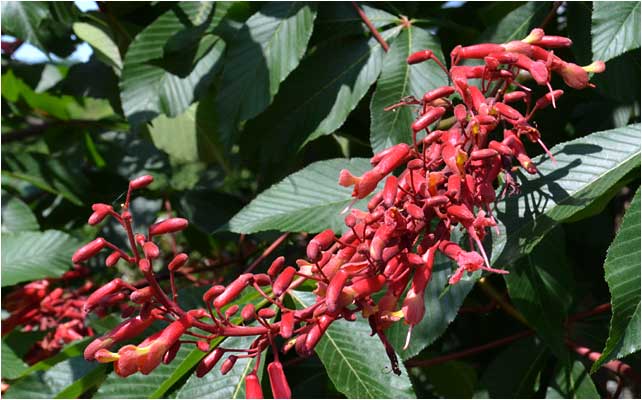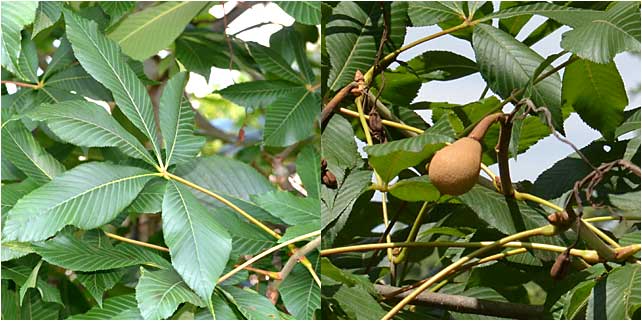66. RED BUCKEYE, Aesculus pavia

This young Red Buckeye (planted, 2010, Douglas Jackson) has thrived in its new home at the Westmoor Arboretum. The winter habit is sturdy, and in late winter the buds begin to enlarge. The species is in the Soapberry family (Sapindaceae) which includes buckeyes and horse chestnuts.
SPRING BUDS

The buds of this tree are quite colorful, and the early bursts of both flowers and leaves is quite dramatic. Here you can clearly see the closed bud scales (left) to protect the bud in cold weather, and then the new growth emerging as the bud scales step aside for spring growth.
SPRING

New growth (flowers and leaves) are on the tree in April, typical of buckeyes. As the days lengthen, the tree "leafs out" and these small flowers (growing on stem-like panicles) will burst into glory. This tree is native to the U.S. and will only grow to app. 25 ft. in height. It grows well in coastal mid-Atlantic states so is a good choice for a warming climate.
FLOWERS

The tree retains these spectacular flowers through late Spring and into early Summer.
FLOWERS & PANICLE

Individual flowers are only about 1 inch long, but there are lots of them on the 8-10 inch panicle. Red Buckeyes are polygamo-monoecious; they can have male, female, and perfect flowers on each tree. The fertilized flowers turn into fruit.
LEAF & FRUIT

The leaf is quite distinctive with five leaflets joined on a long stem. Dark green on top, whitish below. The fruit is actually a husk that contains 3 seeds. This specimen flowers profusely but does not bear a lot of fruit.
FALL, VERY BRIEF

September 27, 2023. At least half the leaves are gone, the others on their way. Red Buckeye is notorious for dropping its fruit and leaves very early in the Fall, even at the end of Summer.